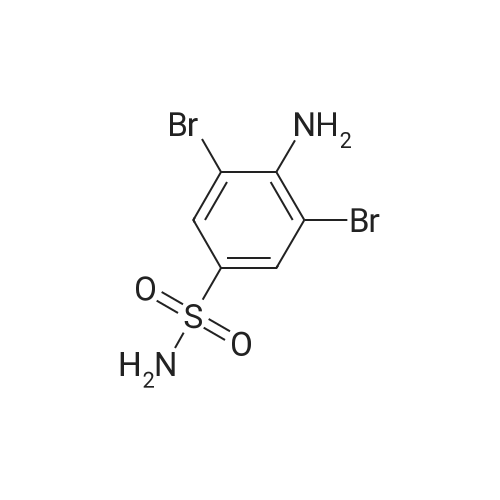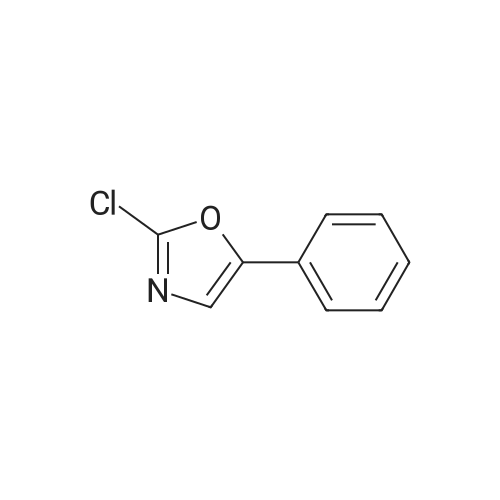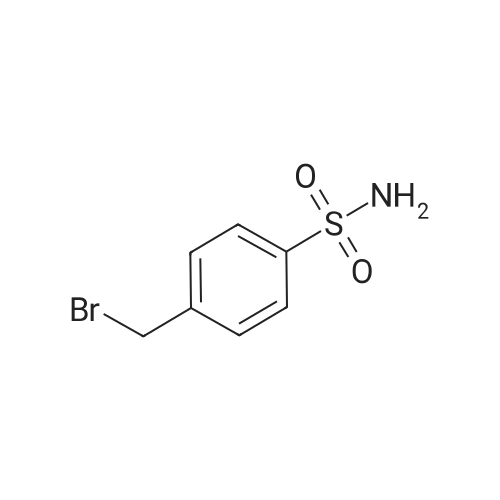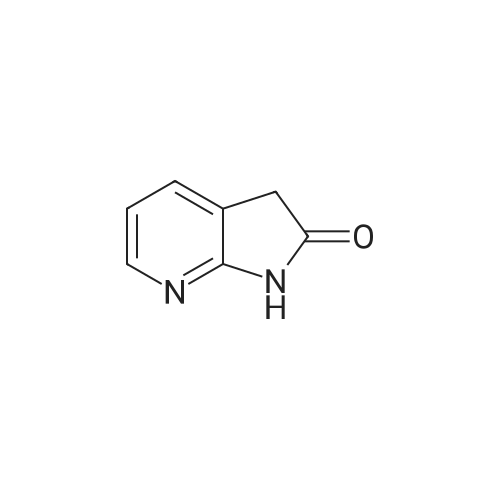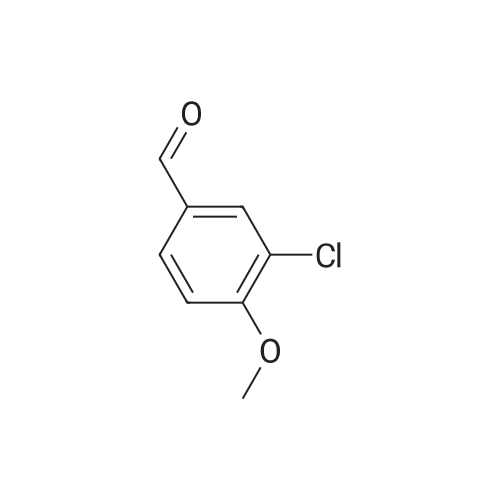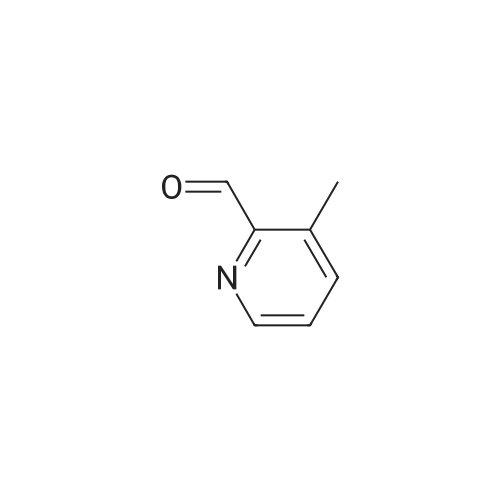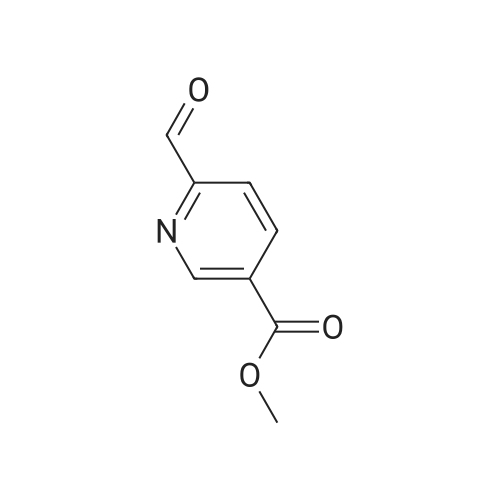| 36 mg (21%) |
With methanesulfonic acid; sodium hydrogencarbonate; In methanol; ethanol; water; N,N-dimethyl-formamide; |
Example 3A 4-[(2-Oxo-1,2-dihydro-3H-pyrrolo[2,3-b]pyridin-3-ylidene)methyl]amino}benzenesulfonamide Dimethylformamide di-tert-butyl acetal (180 mg, 0.89 mmol) was added to a solution of 1,2-dihydro-3H-pyrrolo[2,3-b]pyridin-2-one (70 mg, 0.52 mmol) in 0.25 ml DMF, and the reaction mixture was slowly warmed to 100 C. The cooled solution was then diluted with 5 ml of ethanol. Sulfanilamide (172 mg, 1.00 mmol) and methanesulfonic acid (60 mg, 0.63 mmol) were added, and the reaction mixture was stirred at reflux for 2 hours. The cooled solution was diluted with 4 ml of water, treated with NaHCO3 (70 mg, 0.83 mmol) and stirred 10 min. The resulting solid was filtered, washed with water and ethanol, and then suspended in boiling methanol and filtered upon cooling. Inorganics were removed by filtration through a short silica gel column, eluding with DMF. The resulting solution was diluted with an equal volume of ice water, and the suspension was refrigerated overnight. The solid was isolated by filtration and dried to give 36 mg (21%) of the title compound as a yellow solid: 1H NMR (400 MHz, DMSO-d6) (4:1 ratio of Z:E isomers): delta (Z) 11.07 (s, 1H), 10.76 (d, J=12.4 Hz, 1H), 8.67 (d, J=12.5 Hz, 1H), 7.92 (d, J=5.1 Hz, 1H), 7.84 (d, J=7.3 Hz, |
| 36 mg (21%) |
With methanesulfonic acid; sodium hydrogencarbonate; In methanol; ethanol; water; N,N-dimethyl-formamide; |
EXAMPLE 3 4-[(2-oxo-1,2-Dihydro-3H-pyrrolo[2,3-b]pyridin-3-ylidene)methyl]amino}benzenesulfonamide Dimethylformamide di-tert-butyl acetal (180 mg, 0.89 mmol) was added to a solution of 1,2-dihydro-3H-pyrrolo[2,3-b]pyridin-2-one (70 mg, 0.52 mmol) in 0.25 ml DMF, and the reaction mixture was slowly warmed to 100 C. The cooled solution was then diluted with 5 ml of ethanol. Sulfanilamide (172 mg, 1.00 mmol) and methanesulfonic acid (60 mg, 0.63 mmol) were added, and the reaction mixture was stirred at reflux for 2 h. The cooled solution was diluted with 4 ml of water, treated with NaHCO3 (70 mg, 0.83 mmol) and stirred 10 min. The resulting solid was filtered, washed with water and ethanol, and then suspended in boiling methanol and filtered upon cooling. Inorganics were removed by filtration through a short silica gel column, eluding with DMF. The resulting solution was diluted with an equal volume of ice water, and the suspension was refrigerated overnight. The solid was isolated by filtration and dried to give 36 mg (21%) of the title compound as a yellow solid: 1H NMR (400 MHz, DMSO-d6) (4:1 ratio of Z:E isomers): delta (Z) 11.07 (s, 1H), 10.76 (d, J=12.4 Hz, 1H), 8.67 (d, J=12.5 Hz, 1H), 7.92 (d, J=5.1 Hz, 1H), 7.84 (d, J=7.3 Hz, 1H), 7.77 (d, J=8.7 Hz, 2H), 7.55 (d, J=8.6 Hz, 2H), 7.25 (s, 2H), 6.93 (dd, J=7.3, 5.1 Hz, 1H); (E) 10.79 (s, 1H), 9.70 (d, J=13.4 Hz, 1H), 8.23 (d, J=7.3 Hz, 1H). ESI-MS m/z 315 (M-H). Anal. Calcd. for C14H12N4O3S. 0.5 H2O: C, 51.68; H, 4.03; N, 17.03. Found: C, 51.75; H, 3.95; N, 17.26. |

 Chemistry
Chemistry
 Pharmaceutical Intermediates
Pharmaceutical Intermediates
 Inhibitors/Agonists
Inhibitors/Agonists
 Material Science
Material Science















 For Research Only
For Research Only
 120K+ Compounds
120K+ Compounds
 Competitive Price
Competitive Price
 1-2 Day Shipping
1-2 Day Shipping





